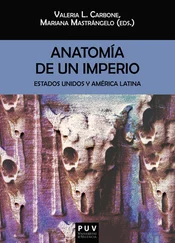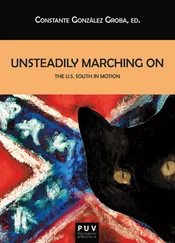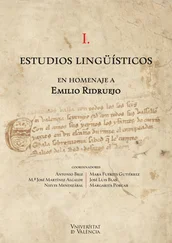Thus, a strong contrast in the notion of liberty is observed between Livermore’s Zoë and Holcombe’s FFC . While Livermore’s Zoë understands liberty as emancipation of slaves and liberation of women, FFC takes the notion as anti-colonialist but only to ensure the continuation of slavery in the hemisphere. This disparity in their rhetoric of liberation leads to different directions in the pedagogical relationship they attribute to the geographies that they deal with. While the South in Livermore’s novel is depicted as in need of northern and Caribbean moral guidance, as previously demonstrated, it is without doubt not the case in FFC . Holcombe’s narrative may shy away from any explicitly expansionist rhetoric in its advocacy for filibusterism and present the expeditions as a liberating mission. Yet when it comes to slavocracy, its voice becomes very loud and clear. In this regard, the disparity that the novel observes between the South and the North becomes a matter of diminishing northern prejudices about slavery through southern pedagogy, and not vice versa. In building this rhetoric, the novel does a careful job to avoid antagonizing the North. Instead, by making the northerner Mabel a mouthpiece for its filibusterism as opposed to the southern belle Genevieve, it creates an atmosphere of unity within which the North and the South complement each other in this didactic relationship.
The Caribbean part of FFC , however, tells another story. The above-mentioned view that places the Cuban Creoles in-between people of color and southern whites in its racial hierarchy locates the island in the position of a student that learns a “noble principle” from the US. 5 The novel makes it clear, through a conversation between Genevieve and Eugene, that the “Cubans are not worthy of freedom” but “they will be” once López’s “gallant little [US American] army” reaches the island to help them gain it (Hardimann 26). Thus, the US – presented as united and without sectional conflict – assumes its common historical self-image in Holcombe’s novel as the “export[er] of its ideas of freedom and liberty worldwide,” as Levander puts it (823). In this sense, Holcombe’s FFC shows a sharp divergence from the geographical rhetoric of Livermore’s Zoë , depicting the South as a geography that is surrounded not by morally superior domestic and foreign neighbors from which it can learn and flourish as a “real Christian republic” (Livermore, Zoë I 283). Instead, it appears, together with its northern sister, as the guide and savior of its racially inferior archipelagic neighbors, in this case Cuba, which are suffering under the yoke of European colonizers.
Conclusion
The legacies of the Civil War and Reconstruction, as well as the ways that these eras and the following decades were for long studied, have imPrint.ed in our minds an adamant connotation of antebellum secessionist sentiments with the South and a steady will to protect the Union with the North. Neither the Confederate monuments nor the flags all over the region erected by the daughters and the sons who still cherish the confederate legacy of the South contribute to the scholarly and political endeavors to deconstruct this association that augments the monolithic and inflexible narratives of southern, as well as US American, histories. Similar connotations exist in the way our collective conceptualization of the relationship between the South and the Caribbean, based on the conviction that the continuation and extension of the slave-labor-based plantation economy would necessitate a strict southern commitment to an expansionist agenda. While these convictions reflect a certain historical accuracy, they undermine the multitude of divergent spatio-political opinions about the nation both in the South and the North. They also neglect the conditions under early globalization, national consolidation, and territorialization processes, which collectively resulted in this coexistence of divergent ideologies.
The above analyses of antebellum novels by Livermore and Holcombe, both of which turn their faces to the Caribbean to construct their narratives about the South, point to this pre-war multivocalism regarding the future of the union and its relation to its Caribbean neighbors. Even though neither of these narratives pursues an explicit expansionist agenda, the former condemns and seeks to transform the filibustering schemes while the second is dedicated to vindicating their cause, both in accordance with their respective visions regarding the future of slavery in the hemisphere. The discordant natures of the southern-Caribbean relationship that each novel depicts arise from precisely these conflicts in their stance towards new-world slavery, as well as their take on the notion of liberty. In Holcombe’s FFC , the history of American independence grants the white US American a legacy of liberty that is defined in terms of anti-colonialism. Blended with a pro-slavery argument, Holcombe’s liberty also includes the right to hold slaves. In this sense, the US South for FFC stands above its Caribbean neighbors and has a duty to aid them in their struggle for freedom. In Zoë , on the other hand, personal freedom constitutes the basis of liberty, and thus the narrative builds its ideal Christian Republic on the foundation of emancipation. Surrounded by its Caribbean neighbors, most of which have recently abolished slavery through different processes, the South has but to follow their morally superior lead.
Remarkably, neither of these novels conforms to the spatial ideologies conventionally associated with their stance toward the “peculiar institution” or with the regional backgrounds of their authors. Livermore’s abolitionism within which the South does not appear as indispensable for the ideal transcendentalist republican future, on the one hand, and Holcombe’s pro-slavery southern filibusterism laden with a unionist sentiment, on the other, speak for the diversity of antebellum spatial visions. The fact that these novels, despite considerable academic attention, have, until today, remained unacknowledged for their unique stance regarding the future of the Union highlights the persistent embeddedness of canonical spatial metanarratives in our analyses.
Works cited
Primary sources
Hardimann, H. M. (Holcombe, Lucy). The Free Flag of Cuba or the Martyrdom of Lopez . New York: De Witt & Davenport Publishers, 1855. date of access: November 20, 2016. http://www.latinamericanstudies.org/filibusters/free-flag-cuba.pdf
Livermore, Elizabeth D. Zoe, or, The Quadroon’s Triumph: A Tale for the Times . Vol.1 & 2. London: Forgotten Books. 2019. Print.
Secondary sources
Bost, Suzanne. Mulattas and Mestizas: Representing Mixed Identities in the Americas, 1850-2000 . Athens: U of Georgia P, 2003. Print.
Brown, William Wells. St. Domingo: Its Revolutions and Its Patriots: A Lecture Delivered Before the Metropolitan Athenaeum, London, May 16, And at St. Thomas’ Church, Philadelphia, December 20, 1854 . Philadelphia, PA: Rhistoric Publications, 1969. date of access: November 10, 2016.
https://archive.org/details/stdomingoitsrevo00brow/page/n2.
Burton, Orville Vernon. “The South as ‘Other,’ the Southerner as ‘Stranger.’” The Journal of Southern History , 89.1 (2013): 7–50. Print.
Burton, Orville Vernon, and Georganne B. Burton. “Lucy Holcombe Pickens, Southern Writer.” The South Carolina Historical Magazine , 103.4 (2002): 296–324. Print.
Chambers, Stephen. No God But Gain: The Untold Story of Cuban Slavery, the Monroe Doctrine, and the Making of the United States . London; New York: Verso, 2017. Print.
Читать дальше












